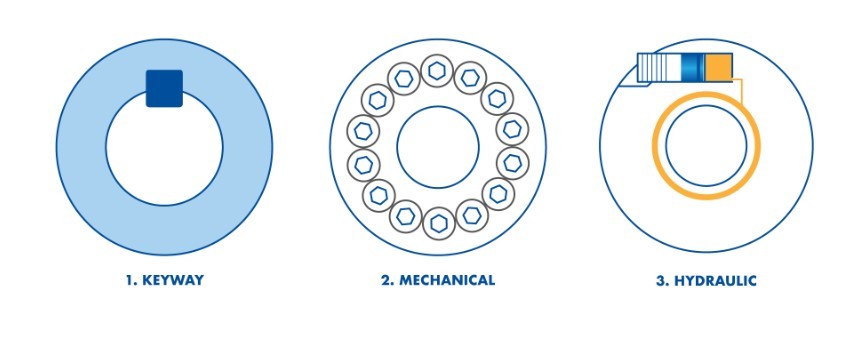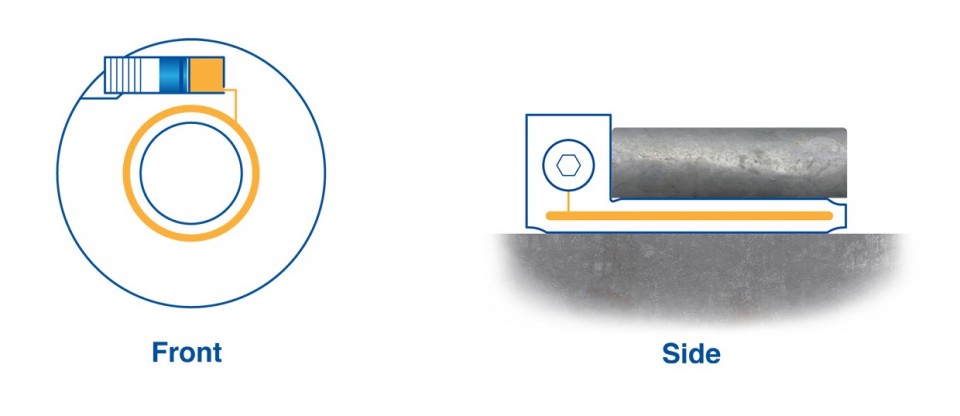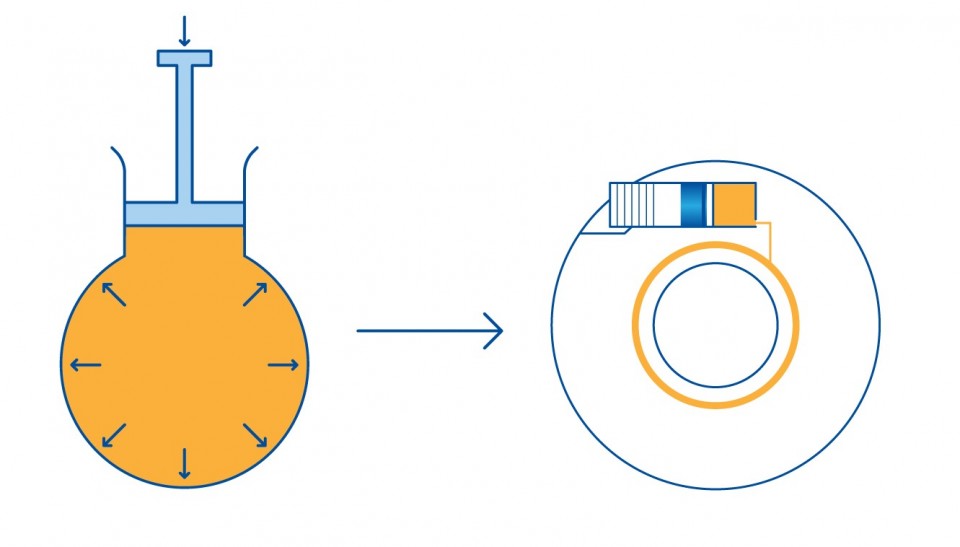

One of the most innovative ways of reliably connecting hubs and shafts, whilst driving high torque and maintaining excellent concentricity. The number of mountings can be a maximum of 2000 times, but essentially it is the speed at which the unit can be attached and released is its key feature ! ETP-HYLOC is available as standard for shafts 50 - 220 mm providing quality clamping and not makrking the shafts during fixing. Concentric run out can be as little ≤ 0,02 mm. Customised models for shaft > 220 mm can also be offered on request. For extreme high torque applications the contact surfaces of ETP-HYLOC (sizes ≥100 mm) can be plated with ETP-HFC, High Friction Coating, which doubles the torque capacity. This product is a solution looking for a challenge.
Today three major solutions are commonly used in the hub-shaft connections industry. This article segment presents the basics of each technique, starting with Keyway connections.

No need for Keyway connections
A keyway connection consists of a slot cut in a shaft component, receiving part of a key that engages with an equivalent slot on a mating hub component, locking the two parts together.

Whilst keyways are cheap to produce and well standardized, disadvantages include;
- Disadvantageous for mounting, dismounting and adjusting
- As forces are concentrated around a small area, bigger shafts are needed to transmit torque, which results in over dimensioning
- Increased unbalance and weaker precision of mounted shaft and components
- Prolonged, meticulous assembly required, as the exact location of the keyway needs to be established
- Keyways weaken shafts, causing an increased risk of fretting, fatigue and breakage
No need for Mechanical clamping connections
Mechanical clamping connections consist of two sleeves with tapered surfaces that are pressed against each other along the shaft. Many screws with high tightening torque are used to hold it together. When mounted the two sleeves deform into contact with the bore of the hub and the shaft. This technique is used in rough applications where surfaces finish and tolerances are variable.

Whilst this standard connection is suited for transmitting high radial loads, bending torque and can withstand temperature variations, disadvantages include;
- Sleeves move axially, making hub positioning difficult
- Use of high tightening torque on screws to overcome internal friction forces on tapered sleeves
- Difficult to get a good runout. Screws must be tightened evenly and in a certain pattern
- Special dismantling screws are needed to overcome internal friction between sleeves and to release the connection
- Disadvantageous for mounting, dismounting and adjusting
Hydraulic clamping connections
Hydraulic clamping connections enable effortless mounting, adjustability, easy reach and a well-balanced design. The technique is a problem solver for critical applications. ETP hydraulic clamping connections are beneficial for working with tight tolerances, resulting in superior runout.

To expand your knowledge of ETP’s hydraulic solution, let’s begin with the principle from which our products originate:
Pascal’s principle
French scientist Blaise Pascal devised the maxim of pressure propagation in liquids during the 17th century. The principle refers to pressure changes in liquid within a confined container where pressure transmits evenly throughout the liquid. When applying pressure at one point of the liquid, an even pressure change occurs around the whole container.

ETP Principle
ETP hub-shaft connections are guided by Pascal’s principle. Our products consist of hardened double walled steel sleeves. The sleeves are welded together to create a hollow chamber and the inside is filled with a hydraulic pressure medium.
How it works

By the low force of your hand tightening the screw, an internal pressure of approximately 1000 bar is created. This causes the sleeves to expand evenly in all directions around the hub and shaft. The result is an even surface pressure and a secure and precise connection between the hub and shaft. By using the ETP principle our products presents you with a number of advantages compared to other solutions;
- Easy and accurate positioning along the shaft, as no axial movement occurs
- Mounting and dismounting is done in seconds
- Excellent runout as the connection self-centers.
- Compact, with small built-in dimensions
- Free space along the shaft as no dismantling screws or special tools are needed

Summary
Hydraulic connection: consists of hardened double-walled steel sleeves filled with a hydraulic pressure medium. With a single screw, pressure builds up around the hub and shaft to form a secure connection.
Keyway connection: consists of a slot cut in a shaft component that receives part of a key that engages with an equivalent slot on a mating hub component, locking the two parts together.
Mechanical connection: consists of two sleeves that have tapered surfaces. With the help of screws, the sleeves deform, creating pressure when coming into contact with the bore of the hub and the shaft.
ETP motto: Quick, Easy, Precise
ETP is the only company manufacturing hydraulic hub-shaft connections in a standard range.
ETP hydraulic connections create an even surface pressure around the hub and shaft.
Mounting and dismounting of ETP connections are performed in seconds.
ETP hydraulic connections give you excellent runout as they are self-centering.
Available through ABSSAC, this is a truly innovative product. All ETP products consist of a double-walled hardened steel (in some cases stainless steel) sleeve, filled with a pressure medium. Within the product flange there are one or more screws and a piston with seals for the pressure setting. When the pressure screw is tightened an even and moderately high surface pressure is created against the shaft and hub, causing the locking effect. The self-contained product allows this procedure to be repeated many times. Whether the hubs are to be removed or repositioned, mounting and dismantling is done in less than a few seconds. The hydraulic principle gives immediate advantages for today´s modern machines.
For further product information click the link here
